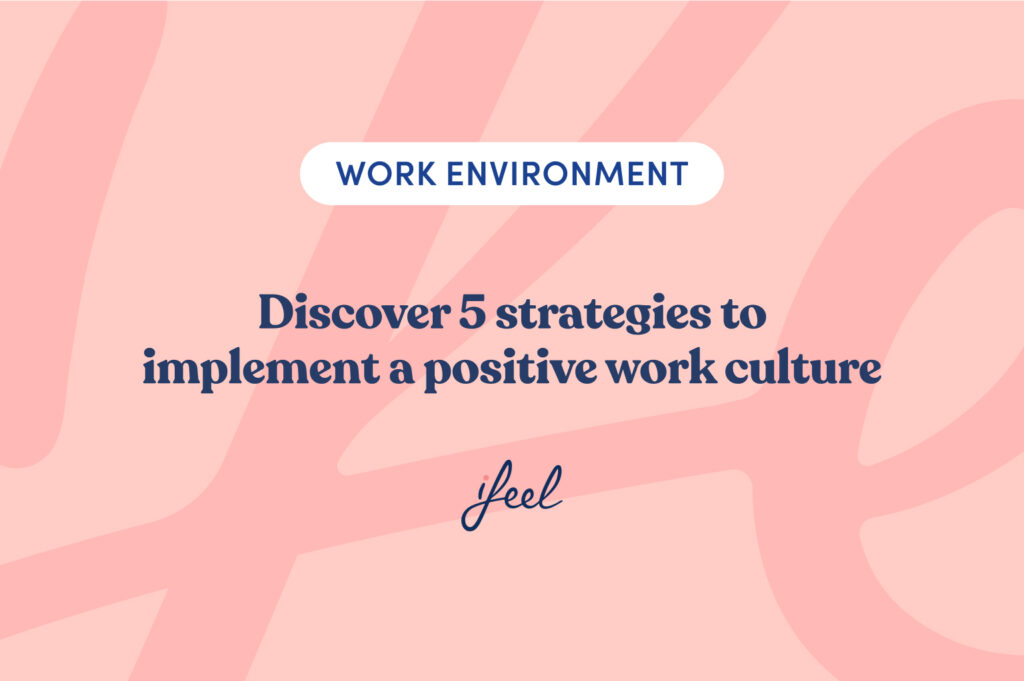As companies navigate an increasingly interconnected and demanding world, where competition is fierce and innovation is key, strategies to implement a positive work culture have become a priority for sustainable business success. A positive corporate culture not only acts as the glue that binds employees together but also becomes an engine that drives the company’s growth and adaptability in the face of market challenges.
The benefits of a positive culture are numerous and well-documented. Studies show that companies with strong cultures report revenues up to four times higher than those with weak cultures. In addition, a positive work environment significantly reduces staff turnover and improves job satisfaction, which translates into higher employee productivity and engagement.
This is why strategies to implement a positive work culture are key for business leaders and HR managers. They can improve employee well-being and enhance the company’s reputation.
To assist in this process, ifeel has designed an in-depth resource to help you foster a positive culture in your organisation. Discover practical strategies to improve the working environment and enhance the well-being of your employees. Don’t miss out; download it for free now!
What do we mean by positive work culture?
The concept of ‘work culture’ refers to the set of shared values, beliefs, and behaviours within a company. It manifests itself in the way employees communicate and build relationships, in their decision-making processes, in how they provide feedback, and in their interactions with customers.
This culture sets the guidelines for daily behaviours within the company, creating a cohesive environment that guides the actions and attitudes of everyone in the company. It is therefore the glue that binds the organisation together, providing a unique and shared identity.
In this sense, strategies to implement a positive work culture are characterised by open communication, exemplary leadership, employee collaboration, and a fair recognition and reward system.
Here we look at a contrast between a positive corporate culture and one that can be labelled as ‘negative’.
| Aspect | Negative Culture | Positive Culture |
|---|---|---|
| Communication | Deficient and dishonest | Open and honest |
| Leadership | Authoritarian and disconnected | Exemplary and approachable |
| Interaction | Conflict and mistrust | Collaboration and respect |
| Recognition | Absent or unfair | Constant and equitable |
| Training | Scarce or non-existent | Continuous and relevant |
| Evolution | Static and rigid | Dynamic and adaptive |
Understanding these differences is crucial for any organisation aiming to improve its internal culture. By fostering a positive culture, companies not only improve employee satisfaction and well-being but also create an environment that drives innovation and growth. A strong and positive work culture can be the differentiating factor that leads a company to sustained success.
The importance of having a positive work culture
A positive work culture improves the work environment and has a direct impact on the company’s productivity and performance.
Think of a work culture as the symphony of an orchestra, in which each employee is a unique instrument. When all these instruments harmonise and share common values, it not only transforms the employees’ work experience but also unlocks the true potential of the organisation.
When all elements work in harmony, a successful melody resonates throughout the company, driving both individual and collective growth.
This analogy is evident in survey data, where 54% of respondents identify the company’s mission and values as fundamental elements that shape their work experience. This finding underscores the importance of fostering a work environment where employees feel valued and understood to achieve business success.
Strategies for implementing a positive work culture
Once we have understood the importance of the concept, it is time to take action and develop strategies to implement a positive work culture.
These tactics will reinforce employee well-being and engagement and enhance the business’s success and resilience. The following are key approaches to transforming your organisation’s culture and ensuring a dynamic and healthy work environment.
1. Assessment and initial evaluation
Understanding the current work culture is essential before implementing changes. Using questionnaires and surveys to collect feedback from employees can help identify areas for improvement. This initial assessment is crucial to tailoring change strategies in a targeted manner.
To assess the state of the work culture, consider conducting the following survey among your employees:
| Question | Yes | Sometimes | No |
|---|---|---|---|
| Would you describe communication in your team as open and honest? | |||
| Do you receive regular feedback on your performance? | |||
| Do the leaders of the organization demonstrate the company’s values? | |||
| Do you feel supported by your supervisors? | |||
| Would you describe the relationship between co-workers as collaborative? | |||
| Do you receive recognition for your work? | |||
| Does the company offer opportunities for training and development? |
This questionnaire can serve as a starting point to identify specific areas for improvement.
2. Developing shared values
Defining and communicating clear values that guide the company’s behaviour is essential. These values should be integrated into all aspects of the business, from recruitment to day-to-day decisions.
In this sense, transparency, communication, and teamwork are fundamental pillars that should be part of the strategies to implement a positive work culture and cultivate an environment of well-being.
3. Exemplary leadership
Leaders should model the desired behaviour, acting according to organisational values and fostering a culture of respect and open communication.
‘At Cabify, leaders strive to provide an environment of support, trust, and professional development, offering constructive feedback and opportunities for growth.’
–Virginia Grenón Lobato, Global Head of Human Resources Operations at Cabify, an ifeel partner company.
4. Training and continuous development
Offering continuous learning and development opportunities helps employees align with company values and improve their skills. Training programmes in leadership, communication, and conflict resolution are essential to maintain a positive culture.
5. Recognition and reward
Developing a job recognition strategy that values behaviours aligned with company values can motivate employees to contribute positively.

Trust the leaders
At ifeel, we know that strategies to implement a positive work culture require ongoing commitment and effort. But they are not in vain. Companies that invest in their employees’ mental and professional well-being are better positioned to grow and thrive in today’s competitive job market.
To help in this process, ifeel has designed an essential resource to foster a positive culture in your organisation. Discover effective strategies to improve the working environment and enhance the well-being of your employees – don’t miss out and download it for free now!
With our mental well-being solution, your company’s HR managers can receive personalised, data-driven advice on improving mental health at work. In addition, this solution offers employees a 360° mental well-being service structured at different levels according to their needs. Try our solution now to see how it could help you.
We hope you found this article on creating a positive work culture interesting. If you would like more information about our mental well-being solution for companies, simply request it, and we will contact your team as soon as possible.










